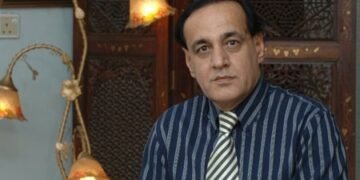Pakistan’s cotton sector is grappling with a deep-seated but solvable crisis stemming not from a lack of resources or infrastructure but from institutional dysfunctions. Pakistan’s cotton sector, once a pillar of our agricultural economy and textile industry, is now in a steep and worrying decline. National production has collapsed from 15 million bales to a meager 5 million. This is not due to a lack of research infrastructure, expertise, or funding instead, it is the result of chronic mismanagement, institutional silos, and an alarming disconnect between research, policy, and execution. At the heart of this crisis lies the Pakistan Central Cotton Committee (PCCC), the apex body tasked with leading cotton research and development. Once a beacon of innovation and coordination, the PCCC has been rendered ineffective, plagued by financial paralysis and administrative inertia. Today, it exists in name alone, unable to steer the very sector it was designed to serve. This dysfunction has fragmented national efforts. Despite over 22 public and private research institutions and more than 1,200 seed companies working on cotton, their efforts are scattered and uncoordinated. The absence of a coherent, unified strategy has left these entities competing rather than collaborating. The result? Minimal impact on productivity, resilience, or innovation. Let us be clear: Pakistan does not lack resources. What we lack is leadership, coordination, and clarity of action. The country’s scientific foundation is sufficient to revive the cotton sector if we empower it to work as a single, strategic force. Unlike successful cotton economies such as the United States, Brazil, and India, where textile industries actively fund research, drive innovation, and help set policy, benefit from a synergistic relationship between research institutions and the textile industry, leading to sustained yield improvements, Pakistan’s textile sector remains largely disengaged. This missed opportunity is depriving us not just of higher yields but also of economic stability, export growth, and millions of farming livelihoods. To reverse this decline, we must treat the PCCC as the strategic national asset it truly is. It must be restructured into a modern, autonomous institution equipped with skilled professionals, adequate funding, and state-of-the-art research facilities. The Vice President of the PCCC should be granted full administrative authority to act decisively, free from bureaucratic delays. Moreover, all research and development entities must align under a unified national strategy led by the PCCC. Knowledge sharing must be institutionalized, not left to happenstance, with mechanisms that foster collaboration over competition. This is not just about fixing cotton; it is about creating a model of agricultural resilience that can be replicated across sectors. Another vital step is the revival of the Cotton Crop Management Group (CCMG). These forums, especially in Punjab and Sindh, once provided a platform for real-time problem-solving and production optimization. They must be restored with meaningful participation, biweekly meetings at research hubs like CCRI Multan, and a focus on measurable outcomes, not symbolic gatherings. None of this is utopian. All of it is achievable. However, it demands political will, administrative reform, and a long-overdue shift from rhetoric to results. If these reforms are implemented with sincerity, Pakistan’s cotton sector can thrive. A revitalized PCCC, backed by a coordinated national effort, can reinvigorate our textile industry, uplift rural livelihoods, and restore Pakistan’s standing in the global cotton market. It is time to move from talk to transformation. The cotton crisis is not just an agricultural issue, it is a national priority. In addition, the road to recovery starts by putting science, strategy, and seriousness back at the center of our cotton policy. This is a critical juncture. If decisive reforms are enacted now, Pakistan can reclaim its position as a global cotton leader and secure livelihoods for millions.
A new economic moment for Pakistan
A new era is dawning, marked by shifting global trade dynamics, rising protectionism, and an unraveling of long-standing multilateral frameworks....
Read more







